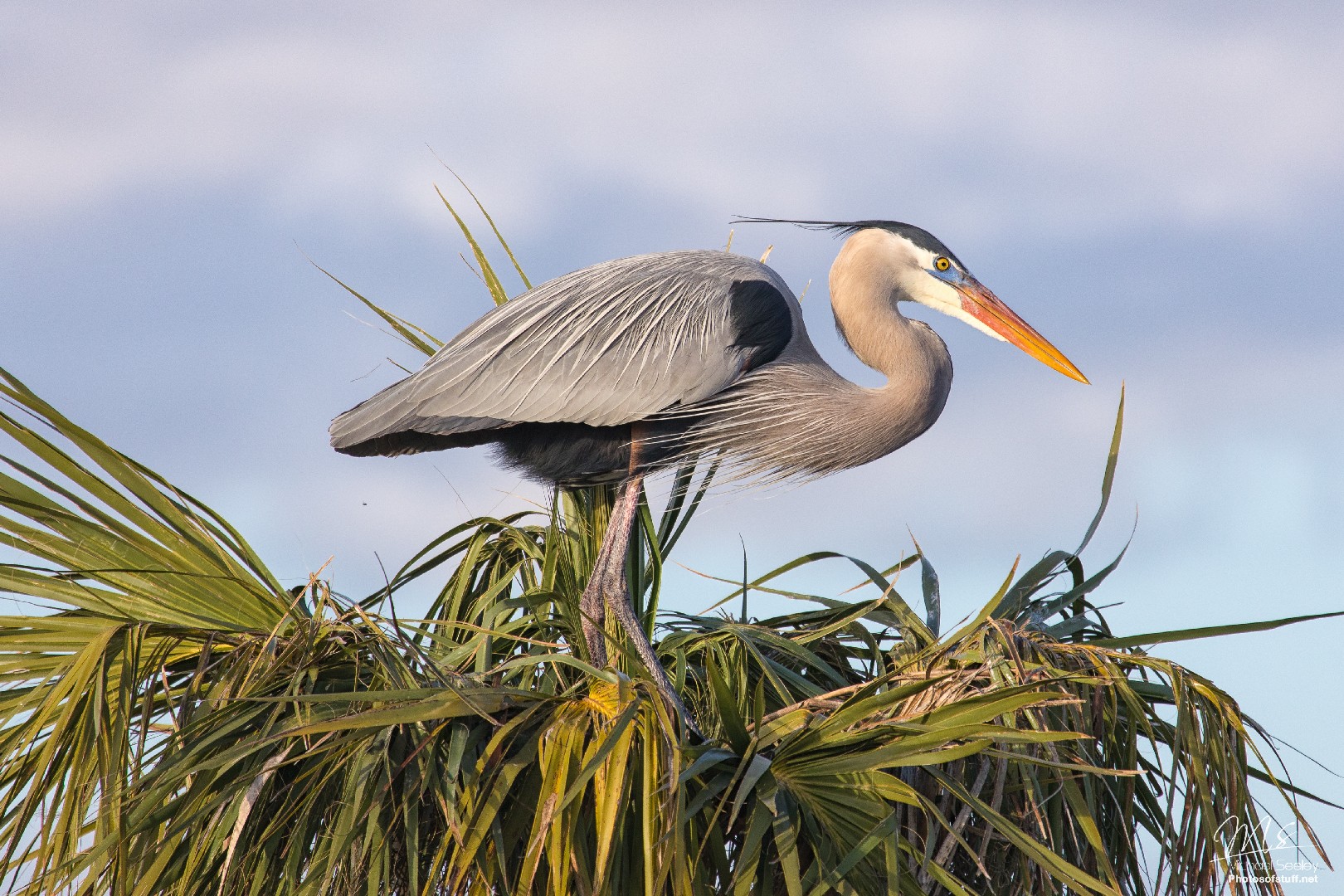Great Blue Heron
A species of Great herons, Also known as Blue Heron Scientific name : Ardea herodias Genus : Great herons
Great Blue Heron, A species of Great herons
Also known as:
Blue Heron
Botanical name: Ardea herodias
Genus: Great herons
Content
Description People often ask General Info
Description
The great Blue Heron, the largest such bird in North America, is quite adaptable and thrives in various wet habitats. Silent, patient, and often motionless, this majestic bird always makes a spectacular sight. Thanks to its specially shaped neck and extremely good night vision, this wading bird is a quick and skilled fish predator. Since the great Blue Heron accumulates toxins in its body, researchers use it as an indicator of dangerous contaminants in local wetlands.
Size
1.2 - 1.3 m
Life Expectancy
23 years
Nest Placement
Tree
Clutch Size
2 - 6 eggs
Incubation Period
1 - 2 broods
Number of Broods
27 - 29 days
Nestling Period
49 - 81 days
Feeding Habits
Great Blue Heron consume a diverse diet ranging from fish, amphibians, rodents, insects, to birds like ducklings. They hunt within reach, using their strong mandibles or sharp bills to grab or impale prey, adapting their feeding technique to the prey's size and defense mechanisms.
Habitat
Great Blue Heron occupy diverse wetland habitats, ranging from marshes and mangrove swamps to lake edges and shores in both freshwater and saltwater environments. Their adaptability allows them to thrive near fish-bearing waters, including in human-altered areas. While they forage in grasslands and agricultural fields, their breeding colonies are typically set up close to secluded swamps, islands, or forests near lakes and ponds.
Nest Behavior
During the breeding season, male great Blue Heron collect sticks and females construct the nest, which takes 3 days to 2 weeks. The nests are lined with soft materials and reused over years. After construction, the great Blue Heron lay eggs and both parents participate in caring for the young.
Nest Characteristics
Great Blue Heron's nest is commonly found in trees but can also be on the ground or artificial structures. A single colony may house 500+ nests. These nests are typically built 100 feet or higher and range from 20 inches to 4 feet across, and can be nearly 3.5 feet deep.
Dite type
Piscivorous
People often ask
General Info
Feeding Habits
Bird food type
Bird Feeder Type

Platform
Sounds
Call
Recording location: United States
Call
Recording location: United States
Behavior
Great Blue Heron showcase a blend of solitary and social tendencies. Their daily activities primarily involve solitary foraging across diverse U.S. habitats, wading or standing still, intently searching for aquatic prey. During flight, great Blue Heron exhibit a distinguished “S” shaped neck posture with trailing legs. In breeding season, they display social behavior by nesting in populous colonies, engaging in complex courtship rituals, including greeting displays, stick transfer, and a nest relief ceremony where plumes are raised, and bills clacked. Great Blue Heron exhibit seasonal monogamy, with partner change each year. Additionally, great Blue Heron display territorial behavior, using imposing postures to deter others, including humans, from their feeding grounds.
Distribution Area
The great blue heron is found throughout most of North America, as far north as Alaska and the southern Canadian provinces in the summer. Birds east of the Rocky Mountains in the northern part of their range are migratory and winter in the coastal areas of the Southern United States, Central America, or northern South America. From the Southern United States southwards, and on the lower Pacific coast, they are year-round residents. 
Species Status
Not globally threatened.
Scientific Classification
Phylum
Chordates Class
Birds Order
Pelicans and Relatives Family
Herons Genus
Great herons Species
Great Blue Heron 